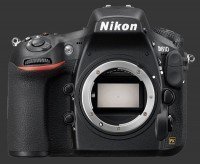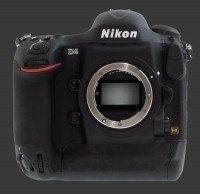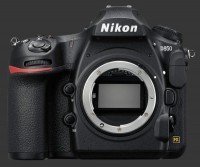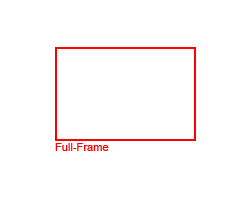Nikon D850 Review
Nikon D850 Introduction
The Nikon D850 is the newest Full-Frame DSLR from Nikon. It replaces the excellent D810 reviewed here
Nikon D810 and launched in 2014 with a completely new imaging pipeline and redesigned body, promising a true leap in performance. This professional DSLR is built around a new 46 megapixels Full-Frame CMOS sensor and fast EXPEED 5 processor, allowing it do deliver a burst of 46 megapixels images at 7 FPS and record 4K Ultra-HD video.
This DSLR boasts a number of features inherited from the top-of-the-line action-oriented Nikon D5 twins, include an ultra-fast 153-Point Phase-Detect AF system with 99 Cross-Type points, 15 of which are sensitive to -4 EV and operate down to F/8 apertures. Owing to having twice the resolution, the D850 has a more typical sensitivity range of ISO 64-25600, although that can be expanded to 32-1024,00. The Low ISO 32 setting allows for long exposures and extremely low-noise to maximize dynamic-range, launching the D850 ahead of most Full-Frame DSLRs for landscape photography.
The D850 gets the most modern Nikon DSLR body, one which is highly similar in ergonomics and size to the Nikon D500 APS-C flagship DSLR reviewed here
Nikon D500. The larger sensor though lets the D850 offer a huge 0.75X magnification 100% coverage viewfinder while keeping the built-in Viewfinder-Shutter, top monochrome backlit status LCD and illuminated controls. There is no room left for a built-in flash but both a standard Hot-Shoe and a Sync-Port are there to use external lighting.
The highly ergonomic body of the D850 uses largely modeless controls, save for the Drive-Mode dial and Focus-Mode switch. As one would expect from such a high-end offering, the D850 offers dual control-dials and a high number of external controls. An optional battery-grip which supports no less than 3 different power sources, replicated the dual control-dials, AF-On button and 8-way Focus-Joystick.
Although this is not an action camera, it is still rather fast and extremely versatile. Its shutter reaches 1/8000s, the fastest mechanical shutter-speed, and can capture exposures of 30s or more thanks to Bulb and Timed exposure modes. The D850 boasts the most flexible Interval Timer on the market and it can be used to produce 8K Time-Lapse, something no other digital camera can yet. Images and video get stored on either XQD or SDXC cards since this camera has one slot of each type.
A number of features from more consumer-oriented models have crept up onto the D850, include built-in WiFi, Bluetooth 4.1 LE, NFC and a tilting touchscreen.
In this in-depth digital camera review, the Nikon D850 is analyzed in terms of features, usability, ergonomics, performance, image quality and controls.

Nikon D850 Features
Sensor
- 46 Megapixels BSI-CMOS sensor
- No Anti-Alias Filter
- Nikon FX Format Full-Frame sensor
- Standard ISO 64 - 25,600 range
- Expanded ISO 32 - 102,400 range
- Customizable Auto ISO
- Built-in Dust-Reduction
- JPEG, TIFF, RAW or JPEG+RAW Output
Exposure
- PASM exposure modes
- 1/8000s - 30s Shutter-speed, plus Bulb and Timed
- EC, ±5 EV, 1/2 or 1/3 EV steps
- FC, -3...+1 EV, 1/2 or 1/3 EV steps
- Matrix, Highlight-Weighed, Center-Weighed, Average & Spot metering
- AE, Flash or AE+Flash Bracketing: 2, 3 or 5 frames, maximum 3 EV steps, 7 or 9 frames, maximum 1 EV steps
- Exposure Fine-Tuning, ±1 EV, 1/6 EV steps
- Exposure and ISO steps of 1, ½ or 1/3 EV
- HDR, 2 shots, 1-3 EV steps, 3 blending levels, single image or series
- Optional Electronic Front-Curtain Shutter
Focus & Drive
- 153-Point Phase-Detect autofocus system
- 99 cross-type points, 15 sensitive to F/8
- Autofocus sensitivity down to -4 EV
- Single-Shot and Continuous focus-drive
- AF-S: Single, Group or Auto focus-points
- AF-C: Single, Group, Dynamic Area or 3D Tracking
- Dynamic AF Area: 9, 25, 72 or 153-point
- Contrast-detect AF for Live-View and video
- Face-Detect AF in Live-View
- Focus Bracketing:
- 1-300 Frames
- 10 Step Sizes
- 0-30s Interval
- Optional Exposure Smoothing
- Optional Silent Photography
- Separate Storage Folder
- 7 FPS Drive, 200 JPEG or 51 RAW
- 9 FPS with MB-D18 Grip and EN-EL18b battery
- Customizable Self-Timer, 1-9 Shots, 2-20s Start Delay, ½-3s Interval
- Quiet-Shutter with Delayed Mirror Return
- Mirror-Lock-Up
- Exposure-Delay, 0.2-3s
- Multiple-Exposure: 2-10 shots, 4 Overlay modes
- Internal-Timer:
- 1-9999 Times, 1-9 Shots
- ½s-24h Frame Interval
- 1min-1week Start Delay
- Optional Exposure-Smoothing
- Optional Silent Photography
- Optional Interval Priority
- Separate Storage Folder
- 8K Images
- Optional Autofocus Fine-Tuning
- Automatic Autofocus Fine-Tuning
Images Parameters
- AutomaticThree types: Normal, Remove Warm Colors & Preserve Warm Colors, Preset, Kelvin and Custom6 Memories WB
- Preset White-Balance Fine-Tuning, 49 steps along G-M axis, 25 steps along A-B
- Kelvin White-Balance Fine-Tuning,G-M, 49 steps
- Picture Styles, 8 built-in, plus user-defined ones
- Automatic or Manual Sharpness, 37 steps
- Automatic or Manual Clarity, 41 steps
- Automatic or Manual Contrast, 25 steps
- Automatic or Manual Saturation, 7 steps
- Manually Adjustable Hue, 25 steps
- Manually Adjustable Brightness, 13 levels
- Virtual WB Bracketing, 2-9 frames, 3 steps, 2 axis
- Virtual Active D-Lighting Bracketing, 2 - 5 frames
- Optional High-ISO Noise Reduction, 3 levels
- Optional Long Shutter Noise Reduction
- Optional Distortion-Correction
- Optional Vignetting-Correction, 3 levels
- Optional Active D-Lighting (ADL), 4 levels or Auto
- Optional Dust-Off reference photo
- In-Camera RAW development
- sRGB or AdobeRGB color space
Controls
- Dual control-dials
- 8-Way joystick
- 8-Way controller
- Modal drive-mode dial
- Modeless Exposure-Mode
- Configurable AF-On button
- Independent Bracketing button
- 2 Customizable Function buttons
- Customizable DOF-Preview button
- Customizable Video-Record button
- Live-View Button
- Focus-Point Llock
Viewfinder & Displays
- 100% Coverage viewfinder, 0.75X magnification
- Built-in viewfinder shutter
- 3.2" Tilting Touchscreen LCD, 2.4 Megapixels
- Illuminated top LCD status display
- Dual-Axis Digital-Level
- DOF-Preview in viewfinder
- Optional OVF composition grid
- Optional OVF 1.3X-Crop overlay
- Sound-Level monitor
Body & Construction
- Nikon F-mount
- Weatherproof body
- Hot-Shoe and Sync-Port
- Illuminated left rear and top controls
- Proprietary 10-Pin Connector
- 4K Ultra-HD HDMI output
- USB 3.0 connectivity
- Built-in Bluetooth 4.1 LE
- Built-in WiFi
- Built-in NFC
- XQD and SDXC UHS-II memory slots
- Proprietary Lithium-Ion battery
- Metal tripod mount
Video
- 3840x2160 @ 30 FPS 16:9 Ultra HD 4K
- 1920x1080 @ 120 FPS 16:9 HD
- Time Lapse Video
- 1s-10m Interval
- 1m-8h Duration
- FX or DX Image Area
- 3840x2160 (4K) @ 30 FPS
- 1920x1080 (Full HD) @ 60 FPS
- 1280x720 (HD) @ 60 FPS
- Optional Exposure Smoothing
- Optional Silent Photography
- Optional Interval Priority
- FX or DX Capture Area
- MPEG-4 or Quicktime H.264 codec
- Video Quality, 2 levels, except for 4K
- Flicker Reduction, 60Hz, 50Hz or Auto
- Built-in microphone, 20 levels
- Wide or Vocal Frequency Response
- Optional Wind Noise Reduction
- Optional Attenuator
- Stereo Audio Input mini-jack
- Stereo Audio Output mini-jack
Nikon D850 Capability - What can it do?
The Nikon D850 is extremely feature-rich and highly customizable. It offers every feature one would expect from a professional DSLR. In this review page, we therefore cover those features which are unique to the D850 or done differently. Even the 375-page manual does not cover all capabilities of this DSLR.
The only real omission from this DSLR is a built-in flash. Although professionals rarely use one given the unnatural look that results. External lighting is supported though via a hot-shoe and sync-port. One thing to know for completeness is that Nikon uses lens-based stabilization and so none of their DSLR cameras have stabilization built-in. The same is true for Canon, leaving the only stabilized full-frame DSLR to Pentax, other than a handful of discontinued models. There are many stabilized full-frame mirrorless cameras though.
There is 3-way power-switch on the Nikon D850. Two positions are the usual On and Off choices. The third position is spring-loaded and triggers illumination of the top status LCD screen plus most buttons on the left side of the body. This is formidable for working in the dark. Optionally, they can be permanently illuminated while the camera is On. Even when the camera is off though, the status LCD nicely indicates which card is inserted and how much space is available in the first occupied slot.

This DSLR offers the same extensive set of drive modes as its predecessors. There is a Continuous Low and a Continuous High position, both customizable. The Low one, CL, shoots between 1 and 6 FPS. The High one, CH, shoots 7 FPS. To reduce shutter-shock, the D850 supports a front-curtain Electronic-Shutter. Exposure still ends with the closure of a mechanical shutter to avoid rolling-shutter artifacts.
The only unusual mode is Q which stands for Quiet Shutter. It works by moving the mirror slower than usual to reduce noise made by the camera and return the mirror to its up-position only when the shutter is fully released. The difference is minimal on the D850 with the mirror sound lasting longer but having a slightly lower pitch. There is a Qc option is is a 6 FPS continuous version of Quiet Shutter. Still, it is not quiet at all.
As repeated several times since the D4 review
Nikon D4, there is one custom menu option which should truly be a drive mode: Exposure Delay Mode. This is effectively a 0.2 to 3 second self-timer which raises the mirror up at the beginning of the delay. In fact, without a remote release, this is the only way to prevent camera shake. The D850 makes it assignable to one of the Fn buttons, making it accessible without navigating through the menu system. Nikon DSLRs prior to the D850 have a minimum 1s Exposure Delay.
The Interval Timer is controlled separately from drive modes. The Nikon D850 has the most sophisticated interval timer of any digital camera. One can specify the number of intervals and the number of shots taken at each interval. With AEB, this can be used to create an HDR time-lapse. The interval can be between ½s and 24h and number of intervals between 1 and 9999. Between 1 and 9 shots can be taken at each interval. A Start Time can be specified up to 1 week in advance even. The D850 adds several new options:
- Exposure Smoothing - This option, available for Time Lapse Video on this and some preview Nikon DSLRs, dampens changes in exposure between shots. This reduces Automatic Exposure changes between shots to smooth transitions.
- Silent Photography - Forces the use of the electronic shutter to reduce noise from the camera.
- Interval Priority - This decides whether the interval or the shutter-speed has priority. When Interval Priority is On, images are always taken at the given interval, even if more time is required for the exposure.
- Starting Storage Folder - Allows the sequence of images produced to be stored in a folder separately from other images and videos.
There is a separate Time Lapse feature which automatically creates a video from a series of frames. The interval between frames can be selected from 1s to 10m in 1s increments, while the total capture time can reach up to 8 hours. Intelligently, this DSLR warns in advance if sufficient memory is not available. Time Lapse video are rendered at the selected movie resolution and frame-rate. Crucially tough, they are framed at a 16:9 aspect-ratio. An Exposure Smoothing option makes changes in Auto Exposure more gradual during recording of a Time Lapse Video. Time Lapse Video inherits the same Silent Photography and Interval Priority options as the Interval Timer. The maximum resolution supported by Time Lapse Video is 4K Ultra-HD. In order to produce 8K Time Lapses, as announced in the Nikon D850 Press-Release, one must use the Interval Timer and assemble the resulting 3:2 aspect-ratio images by software.
Focus Bracketing which Nikon calls Focus Shift makes its debut on the D850 and reaches a never-seen-before level of sophistication. The camera can take up to 300 shots, changing focus between shots by a selected increment on a 1-10 linear scale. The interval between each shot can be set from 0 to 30 seconds in one second increments. Nikon mentions the need to set interval when using a flash, so that it has time to recharge between shots. Just like with the Interval Timer, there is options for Exposure Smoothing, Silent Photography and a Starting Storage Folder.
The 153-point Phase-Detect AF system that made its debut in the Nikon D5 is also found in the D850. This very sophisticated system includes 99 cross-type points and is sensitive down to a class-leading -4 EV. 15 of the cross-type points work down to F/8 which is practical when using lenses with telephoto extenders. There are a number of dynamic modes, including full 3D Tracking AF which is customizable for different subject motion and temporary obstacles. Face-Detection can even be combined with 3D Tracking. The AF system is quite complex. To tame this, the D850 allows photographers to restrict the number of focus points and focus modes available. One can also recall different points depending on the orientation of the camera. Face-Detect AF is allowed to provide feedback to Matrix metering.
Nikon is the only manufacturer to implement a Automated Autofocus Fine-Tuning system. This replaces the usually cumbersome and repetitive process by one which uses Contrast-Detect AF to calibrate the Phase-Detect AF system. The procedure is not explained in the manual but Nikon has a clear tutorial here.

Metering patterns are chosen by a top-mounted button used with the rear control-dial. There are four choices: Matrix, Highlight Weighed, Center-Weighed/Average and Spot. Matrix is Nikon's name for Multi-Segment metering. Highlight Weighed, introduced on the Nikon D810
Nikon D810, provides a segmented metering system that gives priority to highlights. Spot is for Spot metering. Depending on a custom setting, the third choice activates Average or Center-Weighed metering. The same option lets the camera use one of four sizes8mm, 12mm, 15mm or 20mm for the central-portion.
Auto-Exposure Bracketing can be enabled for 2 to 9 frames with steps up to ±3 EV when taking 5 frames or less. One can bracket exposure parameters, flash or both. Virtual Bracketing for WB or Adaptive D-Lighting can be performed instead with 3 step sizes for WB and 5 for ADL. In both cases, only one photo is taken but it is rendered multiple times. For obvious reasons, Virtual Bracketing only applies to JPEG.
Standard ISO sensitivities run from 64 to 25,6500. Expanded ISO values are identified by label. ISO 32 is called L 1.0. ISO 51,200 is called H 1.0 and ISO 102,400 is called H 2.0. Full stops, half-stops or third-stops are available. Auto ISO is specified in the same way as on the D5. Users configure separate maximum ISO sensitivities for normal and flash exposures, plus a minimum shutter-speed. The D850 then adjusts the chosen ISO within the permitted range to obtain at least the specified shutter-speed.
There are now three types of Automatic White-Balance. One attempts to render whites as neutral, one tries to make them look natural and the last preserves warm lighting. This is the same naming of AWB options as on the D5 and D500, which is different from previous Nikon DSLRs.
White Balance options are quite numerous. There are 6 presets With 7 sub-types for Fluorescent: Sodium-Vapor, Warm-White, White, Cool-White, Day-White, Daylight, High Temperature Mercury Vapor.. Custom WB now has 6 memories. Each nicely shows a thumbnail of the image from which it was recorded. For measurements taken with through the OVF, the entire frame is used. For those taken via Live-View, a small selectable area can be sampled. Kelvin WB can be selected between 2500K and 10000K. WB Fine-Tuning offers two axis except for Kelvin which only supports the G-M axis. Regardless, there are always 49 steps along G-M and 25 along B-A. The temperature span along each axis is actually the same, only Nikon allows ¼-point for one and ½-point increments for the other.
This camera features Nikon's Active D-Lighting image processing technology which lightens up dark areas of images to bring out details. There are 5 levels of ADL which differ by how much shadows get boosted. ADL can be manually or automatically set to one of those levels or turned off entirely. ADL indirectly affects RAW capture because exposure is adjusted according to the selected ADL level.
The Nikon D850 features a built-in viewfinder-shutter. A simple rotating switch next to the eye-piece opens or closes it. This shutter prevents light from entering the camera through the optical viewfinder to avoid problems with long exposures. The OVF is large and relatively bright. It shows 100% full-frame coverage at 0.75X magnification. A layer of liquid crystal allows the OVF to mask the edges to simulate different sensor sizes: 36x24mm (Full Frame), 30x20mm (3:2 Aspect 1.2X), 24x16mm (3:2 APS-C 1.5X), 30x24mm (5:4 Aspect) and 24x24mm (1:1 Square Aspect).
The rear display of the Nikon D850 is similar to the one on the D500. First, two pieces of bad news:
- The display is now mounted on a tilting double-hinge. This allows for some additional flexibility in framing while making such a high-end product much less robust. When tilted, the screen exposes a black ribbon-cable which the manual advises not to touch. The advantage offered by this design is mute considering that the camera can send its Live-View on a nearby phone via SnapBridge.
- It is now a touch screen. Touching the screen inadvertently changes the focus point which results in an increase in missed shots. Plus, the screen gets covered in fingerprints and becomes less usable quickly. Luckily, touchscreen functionality can be disabled entirely.
Now the good news about the display:
- The extra-large 3.2" LCD has an incredible 2.4 megapixels of definition and very good visibility.
- In Manual and Aperture Priority mode, and only in those modes, Nikon added an Exposure Priority preview by pressing the OK button during Live-View.
- Live-View has been made more functional with features like Instant 100% Electronic Zoom. This is also available in Playback mode.
- The screen can be adjusted for color-balance and brightness to improve accuracy.
This DSLR can capture JPEG images or RAW files, using the NEF format. The Nikon D850 can produce RAW files uncompressed, losslessly compressed or with lossy compression. Lossless compressive saves on average 40% space without any drop in quality, so this is the recommended option. All measurements here are done on losslessly compressed 14-bit per pixel RAW files. Optionally, RAW depth can be reduced to 12-bits per pixel. It saves around 20% space at the expense of 2 stops of precision.
As a professional tool designed for fast photography, the D850 includes a large number of features to improve efficiency. There are two sets of Memory Banks. One for the Shooting menu, the other for the Settings menu. Each has 4 memories which can be selected independently. The only thing not stored are functions that involve multiple images such as Multiple Exposure and Interval Timer.
The Nikon D850 offers asymmetric dual memory card slots. One accepts common SDXC memory cards, the other the faster yet rare XQD type. This makes managing cards somewhat cumbersome and requires both types of card to take advantage of dual slots. XQD cards are appealing because of their performance and robustness. The risk though is that only Sony makes them since the demise of Lexar. XQD readers are also rather rare now. The implementation of dual memory-cards allows the usual Overflow, Backup and Separate RAW and JPEG modes. Unfortunately, when deleting an image, it only gets deleted from a single card. This can get very tedious if you are shooting action where the success-rate is relatively low.
Connectivity is notably different from its siblings. There is still a proprietary 10-pin connector for using a RF Remote-Trigger or a GPS module but WiFi is now built-in, as are Bluetooth 4.1 LE and NFC. This seems like a lot of options, yet they are all tied together. NFC is used to initiate a connection, Bluetooth is used to maintain it and WiFi is used to transfer images. This keeps whatever smart device gets loaded with Nikon SnapBridge quite busy. Wired transfer can be done via a standard USB 3.0 cable. It also has a mini HDMI port that outputs at 4K. Two mini jacks allow stereo sound input and output for video use.
 |
Please Support Neocamera
All information on Neocamera is provided free of charge yet running this website is a huge endeavor. Purchases made via affiliate links found throughout the site help keep it running and up-to-date. There is no additional cost to you, so please consider buying via these links to our affilates:
Thank you for your support!
Nikon D850 Highlights

Sensor-Size: 36 x 24mm

Actual size when viewed at 100 DPI
| 46 Megapixels DSLR | ISO 32-102400 |
| Nikon F Mount 1X FLM | Shutter 1/8000-30s |
| 100% Coverage Extra Large Viewfinder | Full manual controls, including Manual Focus |
| 2 Axis Digital Level | Custom white-balance with 2 axis fine-tuning |
| Weatherproof | Spot-Metering |
| Built-in Dust Reduction | Hot-Shoe & Sync-Port |
| 7 FPS Drive, Unlimited Images | Stereo audio input |
| 3840x2160 @ 30 FPS Video Recording | Lithium-Ion Battery |
| 3.2" LCD 2.4 Megapixels | XQD, Secure Digital Extended Capacity CF Express Type B |
Updates
2025.11.13

Best Gifts for Photographers in 2025 by Budget
The annual Neocamera Photography Gift Guide updated to 2025. Find great gifts for photographers with any price budget.
2025.07.07

Stellar Photo Recovery Review
Review of Stellar Photo Recovery V12. This Windows and MacOS software can recover photos and videos in a huge number of formats from memory cards, USB drives, SSDs and HHDs.
2025.05.14

Huion Kamvas 13 Gen 3 Review
In-Depth review of the Huion Kamvas 13 Gen 3 Pen Display Tablet for photographers and graphic artists.
2025.01.18

Fujifilm GFX 2025 Lens Roundup
Lens Review roundup of Fujifilm GFX Medium-Format lenses. Quality, performance and handling of the GF20-35mm F/4R WR, GF30mm F/3.5 Tilt-Shift and the GF55mm F/1.7.
2024.11.18

Best 2024 Photography Gifts for Every Budget
Great gifts for photographers and photo enthusiasts selected for every budget among the best products of 2024.
2024.08.07

Eye Protection Tips for Professional Photographers
The four main considerations for professional photographers regarding eyewear.
2024.07.14

Fujifilm X100VI Review
Flagship fixed-lens compact digital camera with a 40 MP sensor and Image-Stabilization, a first for the series. Retro design featuring dual control-dials, plus direct ISO, Shutter-Speed and EC dials. Its hybrid viewfinder can switch between EVF and OVF mode.
2024.05.09

Fujifilm GFX100 II Review
Flagship 102 Megapixels Medium-Format Mirrorless Digital Camera with 8-Stop 5-Axis IBIS, 8 FPS Drive, 8K Video and 400 MP Super-Resolution capture in a weatherproof and freezeproof body with dual control-dials and dual memory-card slots.
2024.04.03

Fujifilm X-T5 Review
Newest Fujifilm flagship boasting a 40 MP APS-C sensor, 5-axis IBIS with 7-stop efficiency, 15 FPS continuous drive, 6.2K Video capture, dual control-dials and dual SDXC UHS-II slots in a sturdy weatherproof and freezeproof body.
2023.11.20

Best Digital Cameras of 2023
Find out which are the Best Digital Cameras of 2023. All the new Mirrorless Digital Cameras from entry-level to high-end professional.
2023.07.10

Fujifilm X-H2 Review
40 Megapixels APS-C Hybrid Mirrorless Digital Camera with 7-stop IBIS. Fastest shutter ever and 8K video capture. Large builtin EVF with 0.8X magnification and 5.8 MP, plus an Eye-Start Sensor. Packed with features and large number of controls in a weatherproof and freezeproof body.
2023.05.07

Sony FE 20-70mm F/4G Review
Review of the unique Sony FE 20-70mm F/4G lens. The optical zoom of this lens spans ultra-wide-angle and medium focal-length coverage, making it one of the most versatile Full-Frame lenses on the market.













